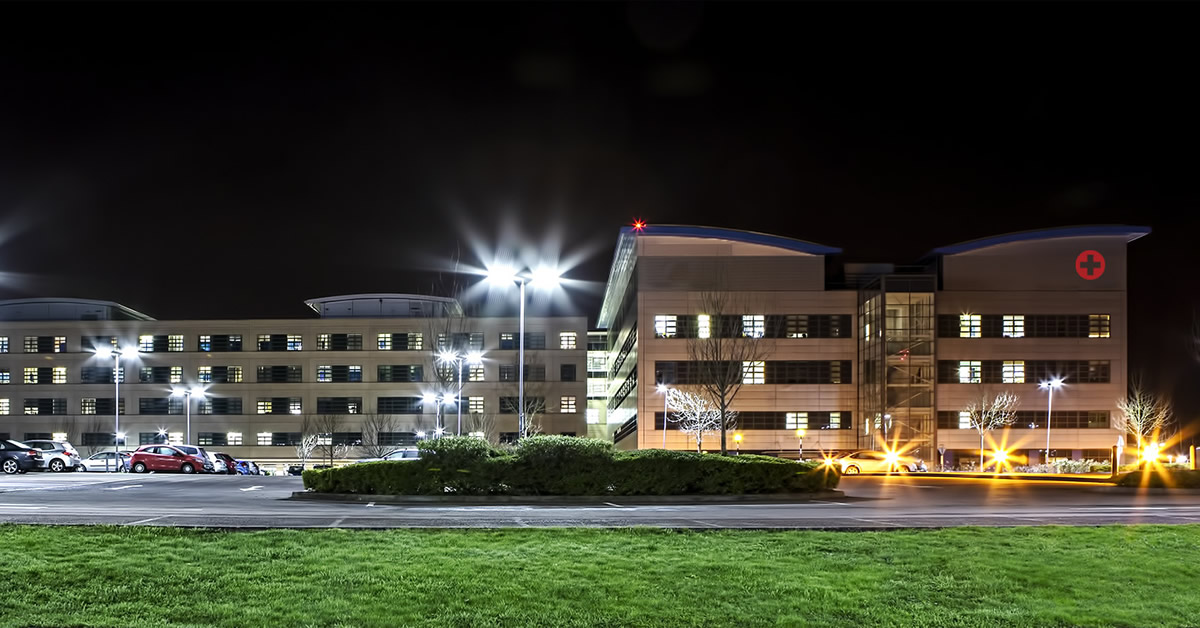Every hospital relies on a resilient supply of power during crisis situations such as extreme weather events that result in power outages, leading to deferring or canceling certain types of patient procedures that must be done when the hospital is fully powered. The requirement for resilient energy mandates most hospital networks to install solutions like diesel generators to provide backup power in order to support essential functions such as emergency room operations, ventilators, imaging, and operating room equipment.
Back-up diesel generators come at a significant cost to the environment and air quality, harming the health of local communities that hospitals are serving. Microgrids from Bloom Energy provide clean, resilient power that allows hospitals to island their power requirements, reducing or eliminating the need to rely on diesel backup power.
Bloom is treated as a normal source of power for hospitals — meaning — Bloom plays the same role as the grid. With this architecture, hospitals can choose to perform elective procedures even during grid outages, as well as avoiding lost patient care days, the need to set up call centers, and other resources to manage information to patients.
By connecting a fuel cell microgrid as normal source, hospitals constantly save on energy costs and save against a loss of revenue due to short or long outages.
Here are some ways that Bloom is helping hospitals and healthcare facilities.
Reduced CO2 for Sutter Health
Sutter Health chose Bloom Energy to implement green building practices while building their new medical center. The solid oxide fuel cell platform provides a substantial amount of power for Sutter Health while reducing CO2 emissions by more than 600,000 lbs each year, reducing their carbon footprint by 19 percent.
SUNY Downstate Medical Center Avoided $1.2B in Upgrades
SUNY is leveraging 1.8 MWs of Bloom Energy Servers to reduce strain on Brooklyn’s power grid and reduce air pollution in the borough.
The system provides reliable 24/7 power to the facility, delivers 45% of SUNY Downstate’s base electrical load, and provides two-thrids of the electricity needs for the University Hospital of Brooklyn.

The solution provided by Bloom is part of a larger energy initiative from Brooklyn Queens Demand Management (BQDM.) The initiative avoided a $1.2 billion utility infrastructure upgrade. The Bloom Energy solution was provided to SUNY at zero cost to the taxpayers while reducing 1.7 million pounds of carbon emissions.
“We are proud to participate in Con Edison’s Brooklyn Queens Demand Management Program and to partner with Bloom Energy to reduce SUNY Downstate’s carbon footprint. In the first two months of operation, SUNY Downstate has reduced its carbon footprint by more than 1.7 million pounds as part of our commitment to community health improvements, making Brooklyn a healthier place to live, work, and raise a family.”
– Wayne J. Riley, M.D., President, SUNY Downstate Medical Center
Microgrid Deployments for Hospitals
Microgrid Knowledge covered Kaiser’s recent innovations at a hospital in Ontario, California, where they are incorporating renewable energy in a move away from diesel generators. Part of that microgrid features a 1 MW fuel cell system from Bloom, that’s paired with solar, and batteries. Kaiser states that this is the first hospital that will be capable of islanding without Diesel.
Contact us today to learn more about how Bloom Energy’s solutions that can help your healthcare facilitate Island it’s energy needs without diesel.



